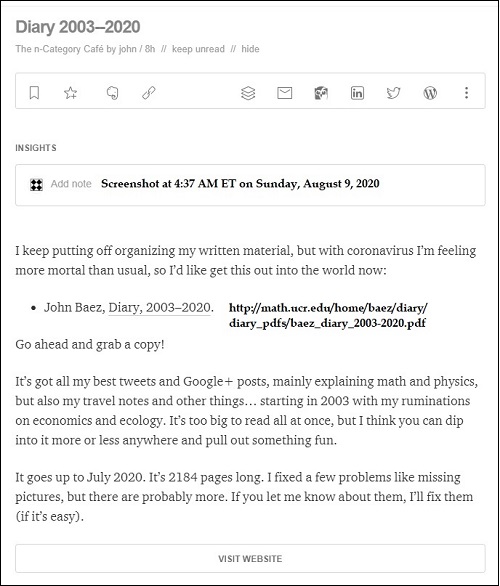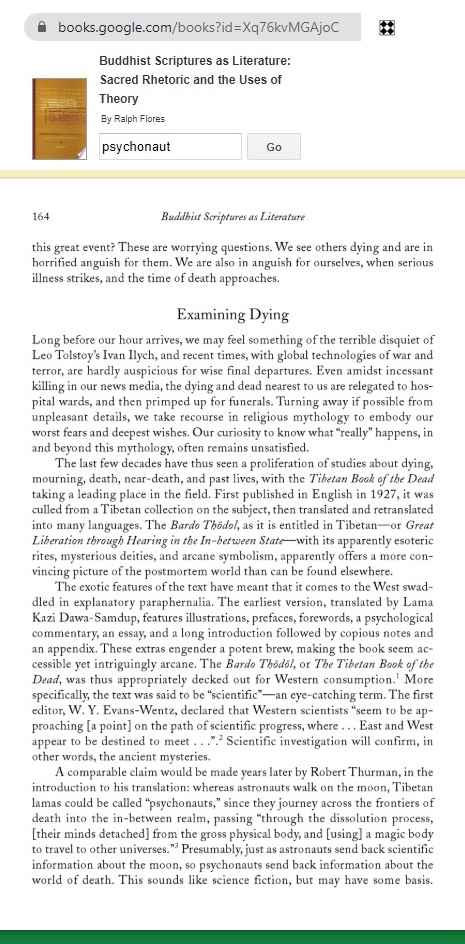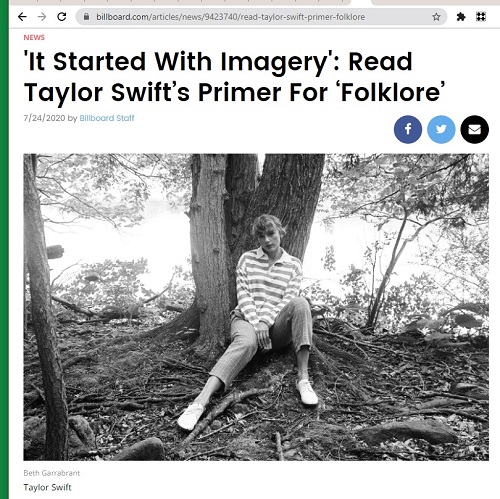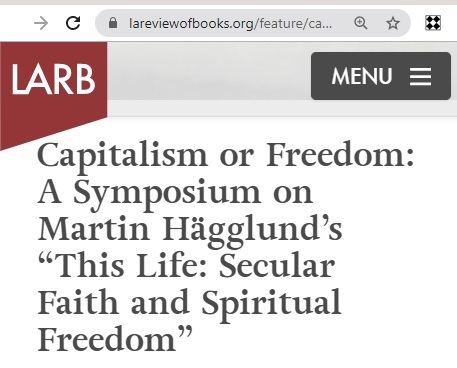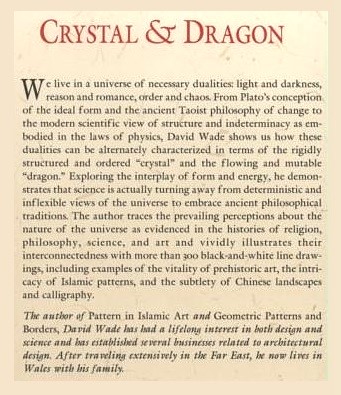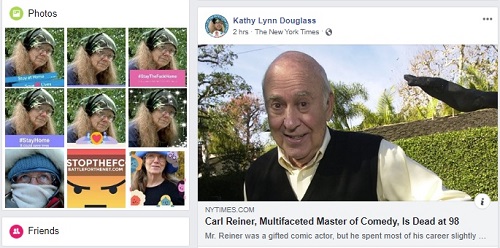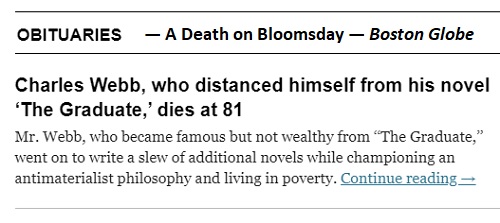Meanwhile, elsewhere . . .
Sunday, August 9, 2020
Hot
A Turner Classic
The New York Times eulogizes a man who died Friday —
“Rabbi Steinsaltz was a prolific and wide-ranging writer
and a sharp observer of humanity who wrote more than
60 books on philosophy, mysticism, theology, even zoology.
His study of kabbalah, ‘The Thirteen Petalled Rose,’ is
considered a classic and has been translated into eight languages.”
Another classic of Jewish thought:
Thoughts of the young Carl Reiner as rendered above in 1967 —
“Somewhere, someplace… there must be a lost horizon…
A Shangri-La where a man can find peace, happiness,
and lots of naked ladies.”
Voilà.

Stillman
“If Scott Fitzgerald were to return to life,
he would feel at home in a Whit Stillman movie.”
— Roger Ebert reviewing “The Last Days of Disco”
on May 29, 1998 (link added)
But not, perhaps, in Boogie Nights of the Golden Circle.
Alice in Bohemia
From an email this morning with a fake spam user address:

If this were the actress Jessy Holtermann . . .

Aooo.
À la recherche
See posts resulting from a search for “Lost Time” in this journal.
Saturday, August 8, 2020
Bullshit Studies
In memory of Wilford Brimley:
“The polymorphic Thing, capable of absorbing the human
as but one among other morphological possibilities in its
seemingly infinite repertoire, can be understood, that is,
as the embodiment of evolution.”
— Eric White, Science Fiction Studies #61 (Vol. 20, Part 3, Nov. 1993),
“The Erotics of Becoming: XENOGENESIS and The Thing“
A Natural Diagram
Compiler Optimization
| “Frances Allen, a former high school math teacher who became one of the leading computer scientists of her generation and, in 2006, was the first woman to win the A.M. Turing Award, considered the Nobel Prize in computing, died in Schenectady, N.Y., on Aug. 4, her 88th birthday. . . .
Ms. Allen, after being introduced to the FORTRAN programming language when it was released in 1957, was fascinated with compiler optimization early in her career and became one of the leading visionaries in the field. Because of its compiler program, FORTRAN enabled a manner of communication with the computer that was closer to human understanding. With that as her model, Ms. Allen was inspired to make compilers more efficient. Her work, which set the tone for how people in the field think about compiler optimization, bridged the gap between how computers communicate and how people communicate, thus opening up the use of computers to scientists and engineers and others outside the glass-enclosed data center fortresses.” — Glenn Rifkin, Washington Post |
A related tale — Systems Programming in this journal.
Of greater interest to mathematicians —
The work of a man to whom Frances Allen was once married —
“Schwartz’s early work with his thesis advisor Nelson Dunford
led to the two of them collaborating on a famous book Linear Operators
which quickly became known simply as ‘Dunford and Schwartz’.”
— https://mathshistory.st-andrews.ac.uk/Biographies/Schwartz_Jacob/.
Schwartz reportedly died on March 2, 2009. For related religious remarks,
see this journal on that date.
Under the April Snow
Friday, August 7, 2020
Enormous Changes at 11:59
Primary Color
From a Log24 search for Schwartz + “The Sun” —
“Looking carefully at Golay’s code
is like staring into the sun.”

Thursday, August 6, 2020
Structure and Mutability . . .
See a Log24 search for Beadgame Space.
This post might be regarded as a sort of “checked cell”
for the above concepts listed as tags . . .
Related material from a Log24 search for Structuralism —

After Personalities . . . Principles
In memory of New York personality Pete Hamill ,
who reportedly died yesterday —
Seven years ago yesterday —
In memory of another New York personality, a parking-garage mogul
who reportedly died on August 9, 2005 —
Icon Parking posts and . . .
Wilford Brimley as Wyoming Rabbi: “Yo, Pickle!”
Dramarama
Wednesday, August 5, 2020
Rendezvous with Drama
Are You Now?
The New York Times obituary for Eric Bentley,
drama critic and playwright, who reportedly died today
at 103, says that . . .
“He took up the causes of the left in
‘Are You Now or Have You Ever Been:
The Investigation of Show Business
by the Un-American Activities Committee,
1947-1958,’ first produced in 1972. . . .”
For that title phrase in this journal, see other posts
now tagged Ekô.
Tuesday, August 4, 2020
Of Making Many Books There Is No End
Published today —
Related quotation —

Cover art published today —

Some mathematics related to the The Fixed Stars cover art,
from a post of May 1, 2020 —
The Escape from Plato’s Cave to . . .
See also Numberland and Walpurgisnacht Geometry.
Monday, August 3, 2020
Liquor Tale
From an obituary in today’s Boston Globe —
“His father, meanwhile, had retired and hoped
to open a liquor store in Brooklyn.
When bureaucratic hurdles made his goal seem unreachable,
an old friend, Anthony Paterno, who ran a grocery and bottling
business in Chicago, persuaded him to try opening a shop there,
where fewer obstacles existed.
Salvatore Terlato enlisted Anthony to help him, and together
they opened the shop, Leading Liquor Marts, in 1955.”
See also Sunset Boulevard Revisited and . . .

“Do not block intersection.” — City of Los Angeles
Celtic Mysteries
Sunday, August 2, 2020
The Sword and the Stone
A post of May 26, 2005, displays, if not the sword,
a place for it —
"The beautiful in mathematics resides in contradiction.
Incommensurability, logoi alogoi, was the first splendor
in mathematics." — Simone Weil, Oeuvres Choisies,
éd. Quarto , Gallimard, 1999, p. 100

Logos Alogos by S. H. Cullinane
"To a mathematician, mathematical entities have their own existence,
they habitate spaces created by their intention. They do things,
things happen to them, they relate to one another. We can imagine
on their behalf all sorts of stories, providing they don't contradict
what we know of them. The drama of the diagonal, of the square…"
— Dennis Guedj, abstract of "The Drama of Mathematics," a talk
to be given this July at the Mykonos conference on mathematics and
narrative. For the drama of the diagonal of the square, see
Saturday, August 1, 2020
A Cross for von Sydow

See also Joseph Malkevitch's memorial essay on Richard K. Guy,
who reportedly died on March 9, 2020, and Log24 on that date.
Thursday, July 30, 2020
A Picture Show for Quanta Magazine
An article yesterday at Quanta Magazine suggests a review . . .
From Diamond Theorem images at Pinterest —

Some background —
Wednesday, July 29, 2020
Duren, Not Durin
A flashback from Log24 posts of July 9-11, 2020,
now tagged Structure and Mutability —
For such temptation, see
Dwarves named “Durin.”
How Deep the Darkness*
Attraction 2: The Digital Rights Management version —
The “Huh?” is from the character Google, at 0:13:07. Click to enlarge.
* See the title phrase in this journal.
Tuesday, July 28, 2020
Burying the Lede
The New York Times reports a July 14 death —
“… Dr, Lauersen … was once married to the heiress
and dance patron Rebekah West Harkness ….” [Links added.]
Monday, July 27, 2020
Intersections Galore
A Brown Bunny
To a Daydream Believer and a Homecoming Queen

“Do not block intersection.” — City of Los Angeles
Sunday, July 26, 2020
Dirty Dancing Disco
Happy Birthday to Kate Beckinsale from Carl Jung.
Related philosophy —
“It seems, as one becomes older,
That the past has another pattern,
and ceases to be a mere sequence….”
— T. S. Eliot, Four Quartets

Para los Muertos
Saturday, July 25, 2020
Nine Years Ago
See cyber space (as opposed to space ) in The Game (July 25, 2011).
Related material — The Ninth Year.
The Upholding
“… to uphold the same ideal image of Space Age perfection.”
— Matt Schudel in The Washington Post , July 24, 2020, at 7:52 p.m. EDT

Friday, July 24, 2020
“Teaching Invites Transformations”
The title is from a 2006 pedagogic address.
Related material from the post “White Mischief” (Feb. 23, 2016) —
“It’s solution, dissolution. Just over and over and over.
It is growth, then decay, then transformation! .
It is fascinating, really.”
— Walter White, Season 1, Ep. 1, “Pilot”
more or less as quoted in huffingtonpost.com
Wednesday, July 22, 2020
Logo
The Project Voldemort logo capture shown below is the first one at archive.org.
It is dated Dec. 23, 2009. See also this journal on that date —
“V. is whatever lights you to the end of the street: she is also the dark annihilation waiting at the end of the street.” (Tony Tanner, page 36, "V. and V-2," in Pynchon: A Collection of Critical Essays, ed. Edward Mendelson. Prentice-Hall, 1978. 16-55). |
“The Pattern of the Thing Precedes the Thing” — Nabokov
|
Subtitles from “Laurel Canyon,” a 2002 film — 7 8 |
Related logo with “Fork me on GitHub” ribbon —
“When you come to a fork . . .” — Yogi Berra
Tuesday, July 21, 2020
Oeuvre
| From “Nabokov’s Crosswords of Composition,” by Rebecca Freeh-Maciorowski, a paper presented at NEMLA, dated 15 October 2014 — “In a way, Nabokov’s entire oeuvre might be built upon one all-encompassing ‘crossword,’ a possibility raised by W.W. Rowe when he writes ‘Words and phrases seem faintly but undeniably to catch many others in the prism of their associations and connotations, almost as if Nabokov’s entire oeuvre were planned from the very start’ (viii). Turning to Pale Fire , the work of Simon Rowberry provides evidence of a whole network of ‘themed entries’ within this novel, what Rowberry refers to as ‘the novel’s promiscuous intertextuality.’ Alternately, the points and coordinates that Nabokov refers to constitute the composition’s ‘checked cells.’ The checked cells are the basic mechanism of the crossword puzzle; essentially, they are the guiding force of the entire puzzle, controlling both the construction and solution. These are the cells within the crossword puzzle in which two words intersect. In Nabokov’s compositional crossword, the ‘checked cells’ are those points which combine disparate entities, places of intersection, where objects and themes converge.” Rowe, W.W., Nabokov’s Deceptive World , New York University Press, 1971. Rowberry, Simon, “Pale Fire as a Hypertextual Network.” 22nd ACM Hypertext Conf., Eindhoven, Netherlands. 6-9 June 2011. Web. |
The Rowberry date appears to be, specifically, 8 June 2011:
A Kinbote note — See also this journal on 8 June 2011.
Update of 3:03 PM ET the same day —
In keeping with Kinbote’s character as an unreliable narrator . . .
Rowberry’s Eindhoven slides indicate he spoke on 9 June 2011.
See as well the Log24 post “Historical Fiction” from 9 June 2011.
Monday, July 20, 2020
Sunday, July 19, 2020
For Roberta Smith, Social Worker*
* For the meaning of the title, see an obituary by Roberta Smith
in this morning’s New York Times , and Today’s Sermon.
Today’s Sermon
“Are you a social worker?”
— Cinematic query in LA at Sunset and Selma
(Mojave , released 3 December 2015 (USA))
Related fiction —
“Then he realized why she looked familiar. He’d seen her just
a few hours before, at the job fair for social workers. They’d both
stood at the edge of a crowd that had gathered around a man
handing out applications for jobs at the Children’s Aid Society.
The demand was so great, he ran out of applications; John didn’t
get one, and neither did the redhead. Looking more resigned than
disappointed, the girl had sighed, ‘Oh well,’ to no one in particular
and then headed for the other end of the conference center.”
— Alpert, Mark. The Furies (p. 11), April 22, 2014.
(St. Martin’s Publishing Group. Kindle Edition)
Saturday, July 18, 2020
The Lexicographic Tradition
See also Kripke in this journal.
Friday, July 17, 2020
The Resurrection Artifact
From Log24 posts tagged Structure and Mutability —
“… an artifact that seemed to have resurrected him from the dead.”
— “Robert Ludlum’s” The Bourne Enigma , published on June 21, 2016
See as well the 2020 film Archive , and the related 2018 film Replicas
in Oslo Variations.
Poetic as Well as Prosaic
Prosaic —
Poetic —
Prosaic —
“These devices may have some
theoretical as well as practical value.“
Poetic —
Theoretical as Well as Practical Value

See also The Lexicographic Octad Generator (LOG) (July 13, 2020)
and Octads and Geometry (April 23, 2020).
Thursday, July 16, 2020
The Crimson Blade . . . Continues.
Wednesday, July 15, 2020
A Four-Color Diamond
Browsing related to the graphic design theory described in the previous post
yielded a four-color diamond illustrating design at Microsoft —
For some related mathematics see . . .
The Four-Color Diamond’s 2007 Source —
See also Log24 posts from August 2007 now tagged The Four-Color Ring.
Category Theory
A related quotation:
“By far the most important structure in design theory
is the Steiner system S(5, 8, 24).”
— “Block Designs,” by Andries E. Brouwer
(Ch. 14 (pp. 693-746) of Handbook of Combinatorics,
Vol. I, MIT Press, 1995, edited by Ronald L. Graham,
Martin Grötschel, and László Lovász, Section 16 (p. 716))
See also the webpage Block Designs in Art and Mathematics
and Log24 posts tagged Plastic Elements.
Tuesday, July 14, 2020
The Sextet Enigma
In memory of . . .
“Helene Lovie Aldwinckle,
codebreaker, broadcaster and gallerist,
born 26 October 1920; died 24 April 2020″ —
Other posts now also tagged The Cologne Sextet.
The Log: A Tale for Joe Hill
Monday, July 13, 2020
Unpoetic License

The above novel uses extensively the term “inscape.”
The term’s originator, a 19th-century Jesuit poet,
is credited . . . sort of. For other uses of the term,
search for Inscape in this journal. From that search —
A quote from a 1962 novel —
“There’s something phoney
in the whole setup, Meg thought.
There is definitely something rotten
in the state of Camazotz.”
Addendum for the Church of Synchronology —
The Joe Hill novel above was published (in hardcover)
on Walpurgisnacht —April 30, 2013. See also this journal
on that date.
Sunday, July 12, 2020
Knight Moves
As noted in the previous post, the phrase “the ability to jump
in and out of spaces” was quoted in an update this morning to
a July 2 post, “The Maxwell Enticement.” Related jumping —

See also other Log24 posts now tagged Knight Move.
The Producers
The above reported death date suggested a Log24 update this morning.
See that update in The Maxwell Enticement , July 2, 2020.
Saturday, July 11, 2020
Raiders of the Lost Arkenstone
See also the previous post and the Red Books of May 30.
Philosophy for Murdoch Fans
The previous post contained a passage from Iris Murdoch’s
1961 essay “Against Dryness.” Some related philosophy —
For those who prefer pure mathematics to philosophical ruminations
there are some relevant remarks in my webpage of August 27, 2003.
Thursday, July 9, 2020
Fashion Space
The Enigma Glyphs

For those who prefer fiction —
“Twenty-four glyphs, each one representing not a letter, not a word,
but a concept, arranged into four groups, written in Boris’s own hand,
an artifact that seemed to have resurrected him from the dead. It was
as if he were sitting across from Bourne now, in the dim antiquity of
the museum library.
This was what Bourne was staring at now, written on the unfolded
bit of onionskin.”
— “Robert Ludlum’s” The Bourne Enigma , published on June 21, 2016
Passing, on June 21, 2016, into a higher dimension —
Tuesday, July 7, 2020
“Ronald Graham, 1935-2020”

Graham reportedly died yesterday, Monday, July 6, 2020.
His AMS obituary says “he created the Erdős number.”
See also the tag in the previous post.
(That tag was created and added to several posts
just before I saw the above news of Graham’s death.
The tag, Erdős number, was suggested by an earlier post from
June 30 — the cartoonist’s death date in today’s 8:45 PM post.)
Memorial from a Cartoon Graveyard
Monday, July 6, 2020
Sunset Boulevard Revisited

The Liquor Locker appears also in Into the Sunset (Aug. 24, 2019)
and in For Devil’s Night (Oct. 30, 2017).
Caliber
| Lines from “Impulse,” a 1990 Sondra Locke film —
He died by two contact Definitely small caliber. There’s almost no rigor, so time of death an anonymous woman If a broad did it, she sure knew |
“Bing bang . . . .” — Song lyric quoted here on 7/01.
Sunday, July 5, 2020
Annals of Medicine:
Death by Ventilator

Related reading —
“As doctors got a crash course in the new disease,
their stance on ventilators began to evolve.“
It’s Still the Same Old Story …
“He recounted the story of Adam and Eve, who were banished
from paradise because of their curiosity. Their inability to resist
the temptation of the forbidden fruit. Which itself was a metaphorical
stand-in for knowledge and power. He urged us to find the restraint
needed to resist the temptation of the cube—the biblical apple
in modern garb. He urged us to remain in Eden until we were able
to work out the knowledge the apple offered, all by ourselves.”
— Richards, Douglas E.. The Enigma Cube (Alien Artifact Book 1)
(pp. 160-161). Paragon Press, 2020. Kindle Edition.
The biblical apple also appears in the game, and film, Assassin's Creed .
Related material —
See the cartoon version of Alfred North Whitehead in the previous post,
and some Whitehead-related projective geometry —
Enigma Variations
The previous post reported, perhaps inaccurately, a publication
date of February 13, 2020, for the novel The Enigma Cube .
A variant publication date, Jan. 21, 2020, is reported below.
This journal on that date —
The Enigma Cube
Promotional material —
“Did you buckle up?” — Harlan Kane
The publication date of The Enigma Cube reported above was February 13, 2020.
Related material — Log24 posts around that date now tagged The Reality Bond.
Saturday, July 4, 2020
Plan 9 from Oz
Image from a film review of “Eureka” (a 1983 film by Nicolas Roeg).
Note the date of the review — January 09, 2015.
Also on January 09, 2015 —
Related cinematic philosophy —
Friday, July 3, 2020
The Hot Rock
See also a different interpretation, by David Lynch,
of the “twin peaks” concept —

Midrash for Mayakofsky —


Thursday, July 2, 2020
Two Bits
“…problems can be solved by manipulating just two symbols, 1 and 0….”
— George Johnson, obituary of Claude Shannon
“The female and the male continue this charming dance, populating
the world with all living beings.”
— Leonard Shlain, The Alphabet Versus the Goddess,
Penguin Arkana paperback, 1999, Chapter 17,
“Lingam/Yoni”

The Speed of Thought

From the above search result — “0.69 seconds.”
See as well Theresa Russell and Rutger Hauer in Eureka . . .
See also a different interpretation, by David Lynch,
of the “twin peaks” concept —

The Maxwell* Enticement
[Update of Sunday morning, July 12, 2020 —
This July 2 post was suggested in part by the July 1 post Magic Child
and in part by the Sept. 15, 1984, date in the image below. For more
details about that date, possibly the death date of author Richard
Brautigan, see "The Life and Death of Richard Brautigan," by
Lawrence Wright, in Rolling Stone on April 11, 1985.
From that article:
Marcia called him the next night [Sept. 15, 1984]
in Bolinas. He asked if she liked his mind. "I said,
‘Yes, Richard, I like your mind. You have the ability
to jump in and out of spaces. It’s not linear thinking;
it’s exciting, catalytic, random thinking.’ "
Such thinking, though interesting, is not recommended for the
general public. Sept. 15, 1984, was perhaps Brautigan's last day alive.]
* See Maxwell in posts tagged Gods and Giants.
Wednesday, July 1, 2020
The Long Strange Road
Actress Descending a Staircase
The above title was suggested by a scene in Body Double (1984) . . .

Variations, starring Theresa Russell, on related themes —
The De Palma Balcony in Body Double , and "ready for my closeup" —


"Bing bang, I heard the whole gang!"
Summary —
Tuesday, June 30, 2020
The Social Network
Writer Robert Avrech on director Brian De Palma —
“Both Brian and I greatly admire Alfred Hitchcock so we were
pretty much on the same page aesthetically. That’s how I came
to write Body Double , a superb thriller that immediately thrust
me into the Hollywood limelight.”
— https://www.opednews.com/populum/page.php?
f=Behind-the-Scenes-with-Hol-by-Joan-Brunwasser-
American-Jews_Hollywood_Interviews_Judaism-Jewish-
131219-897.html
Monday, June 29, 2020
The Same Page

Writer Robert Avrech on director Brian De Palma —
“Both Brian and I greatly admire Alfred Hitchcock so we were
pretty much on the same page aesthetically. That’s how I came
to write Body Double , a superb thriller that immediately thrust
me into the Hollywood limelight.”
— https://www.opednews.com/populum/page.php?
f=Behind-the-Scenes-with-Hol-by-Joan-Brunwasser-
American-Jews_Hollywood_Interviews_Judaism-Jewish-
131219-897.html
See also Avrech in this journal —
Dark Comedy

“There are dark comedies. There are screwball comedies.
But there aren’t many dark screwball comedies.
And if Nora Ephron’s Lucky Numbers is any indication,
there’s a good reason for that.”
— Todd Anthony, South Florida Sun-Sentinel
Perhaps another indication — De Palma's Body Double .
"Like a rose under the April snow . . . ." — Streisand
The De Palma Balcony

"The Demolished Man was a novel that had fascinated De Palma
since the late 1950s and appealed to his background in mathematics
and avant-garde storytelling. Its unconventional unfolding of plot
(exemplified in its mathematical layout of dialogue) and its stress on
perception have analogs in De Palma's filmmaking." — Wikipedia
This, together with the Cuernavaca balcony in Deschooling MIT, is
perhaps enough of a clue for mystified theologians on St. Peter's Day.
Sunday, June 28, 2020
Mystic Cristal Revelation
In memory of actress Linda Cristal — The New York Times today —
“After a modest film career, followed by guest roles on television,
Ms. Cristal auditioned for ‘The High Chaparral,’ a western
developed by David Dortort, the creator and producer of ‘Bonanza.’
In her telling, it was a memorable occasion.”

Judy Carne and Hoss in NBC’s “Bonanza,” a nemesis of
CBS Sunday programming.
The New York Times on “Bonanza” in 2010 —
“Mr. Dortort oversaw production of the show for most of its run. In addition
to telling stories based on historical events involving the Comstock Lode and
the oncoming Civil War, the show dealt with themes like racial prejudice and
religious tolerance. Mostly, though, its drama, and its popularity, were because
of its focus on the Cartwrights and their tightknit bond.
‘What is the message?’ Mr. Dortort said. ‘Love is the message.’
David Solomon Katz was born in Brooklyn to Jewish immigrant parents from
Eastern Europe on Oct. 23, 1916, and grew up in a neighborhood famous for
the gangsters of Murder Inc. …”
Chariot
Detail from the Norwegian webpage in the previous post —

Related material in this journal — Chariot Race and Vajrayana.
The Nirvana Shirt
For the shirt, see Norwegian artist Josefine Lyche in
Related material — A pyramid by Lyche and erotic Picasso:
Those who enjoy the occult may be entertained by the number 347 in
“Pablo Picasso. Suite 347.” That number appeared in this journal,
notably, on Christmas Eve 2005 as a page number from the classic
The Club Dumas , a novel by Arturo Perez-Reverte.
“Here We Are Now, Entertain Us.” — Nirvana, “Teen Spirit”
Or: Kipling and the Temple of Doom
See also Kipling and The Temple.
This post was suggested by a remark of Holland Cotter in The New York Times
on April 19, 2012 —
“An 18th-century Jain diagram of the cosmos turns the universe
into a kind of salvational board game. “
Hence . . .
The Mephisto Device
The previous post, and Wallace Stevens, suggest a search
in this journal for “The Trials of Device.” That search yields,
among other images, the following —

The Mephisto Waltz author, Fred Mustard Stewart, reportedly died
on February 7, 2007. A check of that date in this journal yields . . .

This is not John Belushi, whose cover of
Frankie Laine’s “Rawhide” was memorable,
but Laine himself.
Some Frankie Laine lyrics quoted here on Stewart’s death date:

“Times when I know you’ll be lonesome,
times when I know you’ll be sad
Don’t let temptation surround you,
don’t let the blues make you bad”
— “We’ll Be Together Again,”
Frankie Laine,
March 30, 1913 —
February 6, 2007
Mephisto fans may prefer Sting’s version of the phrase
“we’ll be together.” See Complex Reflection, April 20, 2012.
Saturday, June 27, 2020
Smile of a Summer Night
Friday, June 26, 2020
Persons and Operators and Things
| Harvard University Press on a book, Persons and Things, it published on March 31, 2010 Moving effortlessly between symbolist poetry and Barbie dolls, artificial intelligence and Kleist, Kant, and Winnicott, Barbara Johnson not only clarifies psychological and social dynamics; she also re-dramatizes the work of important tropes—without ever losing sight of the ethical imperative with which she begins: the need to treat persons as persons. In Persons and Things , Johnson turns deconstruction around to make a fundamental contribution to the new aesthetics. She begins with the most elementary thing we know: and reveals that their claims upon us are fraudulent. Johnson revolutionizes the method by showing that the inanimate thing exposed as a delusion is central to fantasy life, that fantasy life, however deluded, should be taken seriously, and that although a work of art “is formed around something missing,” this “void is its vanishing point, not its essence.” She shows deftly and delicately that the void inside Keats’s urn, Heidegger’s jug, or Wallace Stevens’s jar forms the center around which we tend to organize our worlds. The new aesthetics should restore fluidities between persons and things. In pursuing it, Johnson calls upon Ovid, Keats, Poe, Plath, and others who have inhabited this in-between space. The entire process operates via a subtlety that only a critic of Johnson’s caliber could reveal to us. |
I prefer the more straightforward insanity of Operators and Things .
Barbara Johnson reportedly died on Aug. 27, 2009. See that date
in other posts now tagged Autistic Enchantment. (That phrase is
the sort of sneering tag one may expect from deplorable academics.)
Distancing
“But for all its success, Mr. Webb largely distanced himself
from ‘The Graduate,’ which featured a Buck Henry and
Calder Willingham screenplay . . . . ”
— Harrison Smith in The Washington Post yesterday
Related material —
“the liberation of the plastic elements.”






